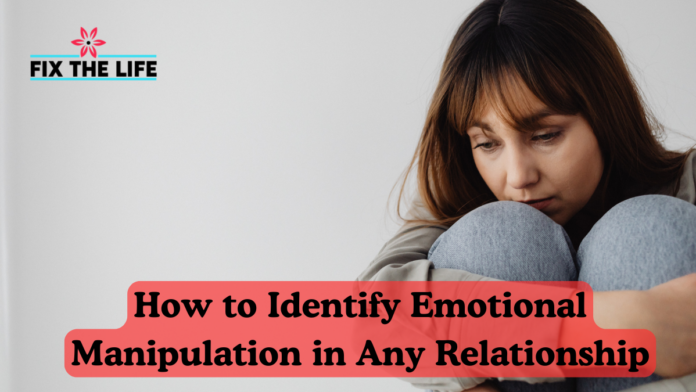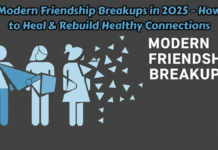Emotional manipulation is a subtle yet powerful tactic used to control, confuse, or undermine someone. It can appear in romantic partnerships, friendships, family dynamics, and even professional settings. Understanding how to identify emotional manipulation is crucial for maintaining healthy boundaries and emotional well-being.
This article provides a step-by-step guide to spotting manipulation, uncovering toxic patterns, recognizing gaslighting signs, and restoring your emotional clarity with practical strategies.
What Is Emotional Manipulation?
Emotional manipulation involves using deceptive, exploitative, or coercive tactics to influence another person’s feelings or actions. Unlike honest communication, manipulation aims to distort reality, provoke guilt, or control behavior.
Historical Context
The term “emotional manipulation” has roots in psychological warfare and propaganda, gaining public attention in the 20th century. The concept of gaslighting, for instance, stems from the 1938 play Gas Light, where a husband systematically manipulates his wife into questioning her sanity.
Step-by-Step Guide: How to Identify Emotional Manipulation
Step 1: Watch for Shifting Blame
Manipulators rarely accept responsibility. Instead, they twist situations to make you feel guilty or at fault—even when you’re not.
Example: You bring up feeling neglected, and the response is, “Well, if you weren’t so needy, maybe I’d want to spend more time with you.”
Toxic Pattern Alert:
- Deflection during conflict
- Overemphasis on your “overreaction”
- You constantly feel like the problem
Step 2: Recognize Gaslighting Signs
Gaslighting is a common manipulation tool that makes you question your reality, memory, or judgment.
Common Signs:
- They deny things they’ve said or done.
- They claim you’re too sensitive or imagining things.
- You begin doubting your memory or instincts.
Example: You confront them about a lie, and they respond, “You’re crazy; that never happened.”
Expert Insight: Psychologist Dr. Robin Stern notes that gaslighting often escalates slowly, leaving victims emotionally exhausted and mentally disoriented.
Step 3: Identify Love Bombing or Sudden Withdrawal
Love bombing is when someone overwhelms you with affection, compliments, or gifts—only to suddenly withdraw, leaving you craving their validation.
Signs to Watch:
- Intense declarations of love early on
- Fast-paced relationship dynamics
- Abrupt emotional distance after conflicts
This emotional rollercoaster keeps you dependent on their approval, destabilizing your emotional balance.
Step 4: Examine How Boundaries Are Respected
Manipulators test boundaries early and often. If you assert yourself, they may respond with guilt-tripping, passive aggression, or anger.
Telltale Behaviors:
- Pressuring you to reveal private thoughts
- Insisting on their needs over yours
- Minimizing your discomfort
Healthy relationships require mutual respect for boundaries. Consistent disregard is a red flag.
Step 5: Monitor Your Emotional State Over Time
Over time, emotional manipulation leads to a pattern of self-doubt, anxiety, and emotional fatigue.
Ask Yourself:
- Do you feel emotionally drained after interactions?
- Do you second-guess your choices more often?
- Are you losing confidence in your perception?
If the answer is yes to most of these, you may be caught in a toxic dynamic.
Examples Across Different Relationships
Romantic Relationships
One partner uses guilt (“After everything I’ve done for you!”) to control the other’s decisions.
Workplace Manipulation
A manager takes credit for your work and makes you feel incompetent when you bring it up.
Family Dynamics
A parent invalidates your emotions by saying, “You’re too emotional—just like always.”
These examples show how manipulation can wear many disguises.
How to Break Free from Toxic Patterns
- Trust your instincts – If something feels wrong, it probably is.
- Document conversations – Especially when dealing with gaslighting.
- Set and enforce clear boundaries – Repeat them when needed.
- Seek external validation – Talk to trusted friends or therapists.
- Don’t engage in blame games – Stay calm, clear, and consistent.
FAQs
Q1: Can emotional manipulation be unintentional?
A: Yes. Some people manipulate without realizing it, especially if they were raised in environments where such behavior was normalized.
Q2: How do I confront a manipulator without escalating things?
A: Use “I” statements. Stay calm. Focus on facts, not emotions. Limit exposure if the behavior continues.
Q3: What’s the difference between healthy influence and manipulation?
A: Healthy influence respects your autonomy. Manipulation disregards your consent and distorts truth to control.
Q4: When should I seek professional help?
A: If the relationship causes ongoing anxiety, self-doubt, or emotional distress, therapy can offer clarity and coping tools.
Final Thoughts
Learning how to identify emotional manipulation empowers you to reclaim your emotional space and maintain healthy, respectful relationships. The earlier you notice the signs—be it gaslighting, toxic patterns, or constant boundary-pushing—the better your chances of addressing or exiting harmful dynamics with confidence and clarity.




